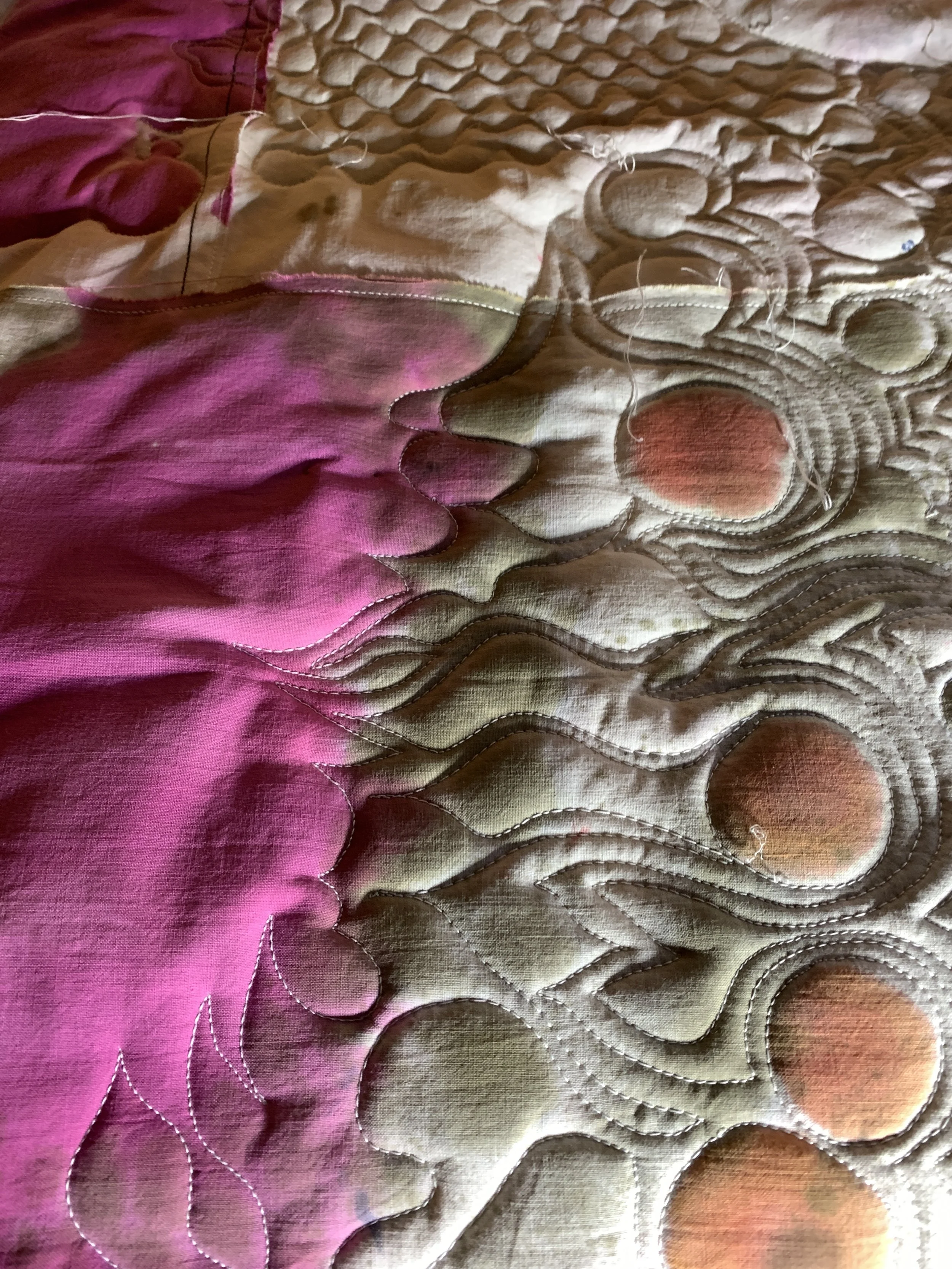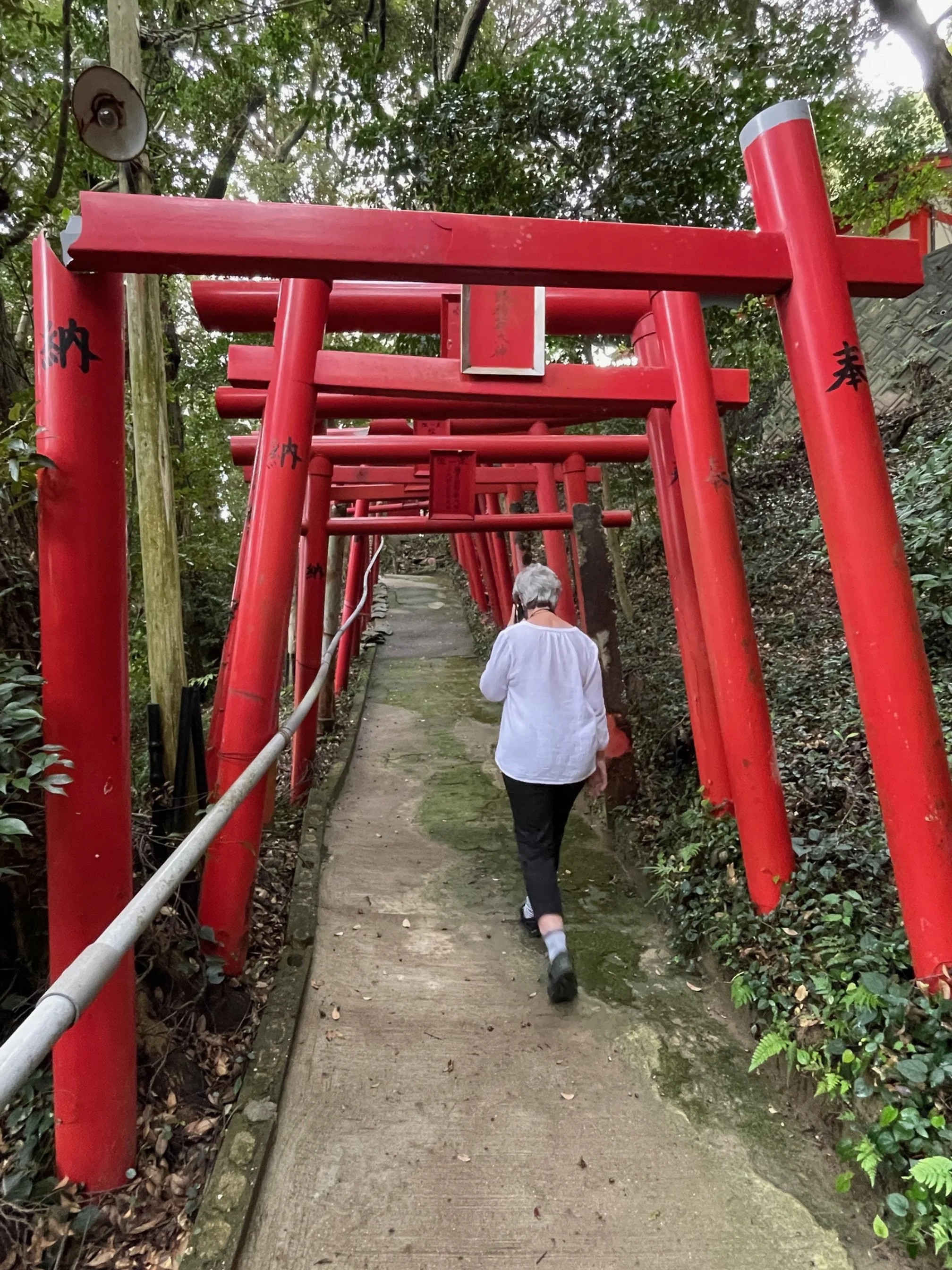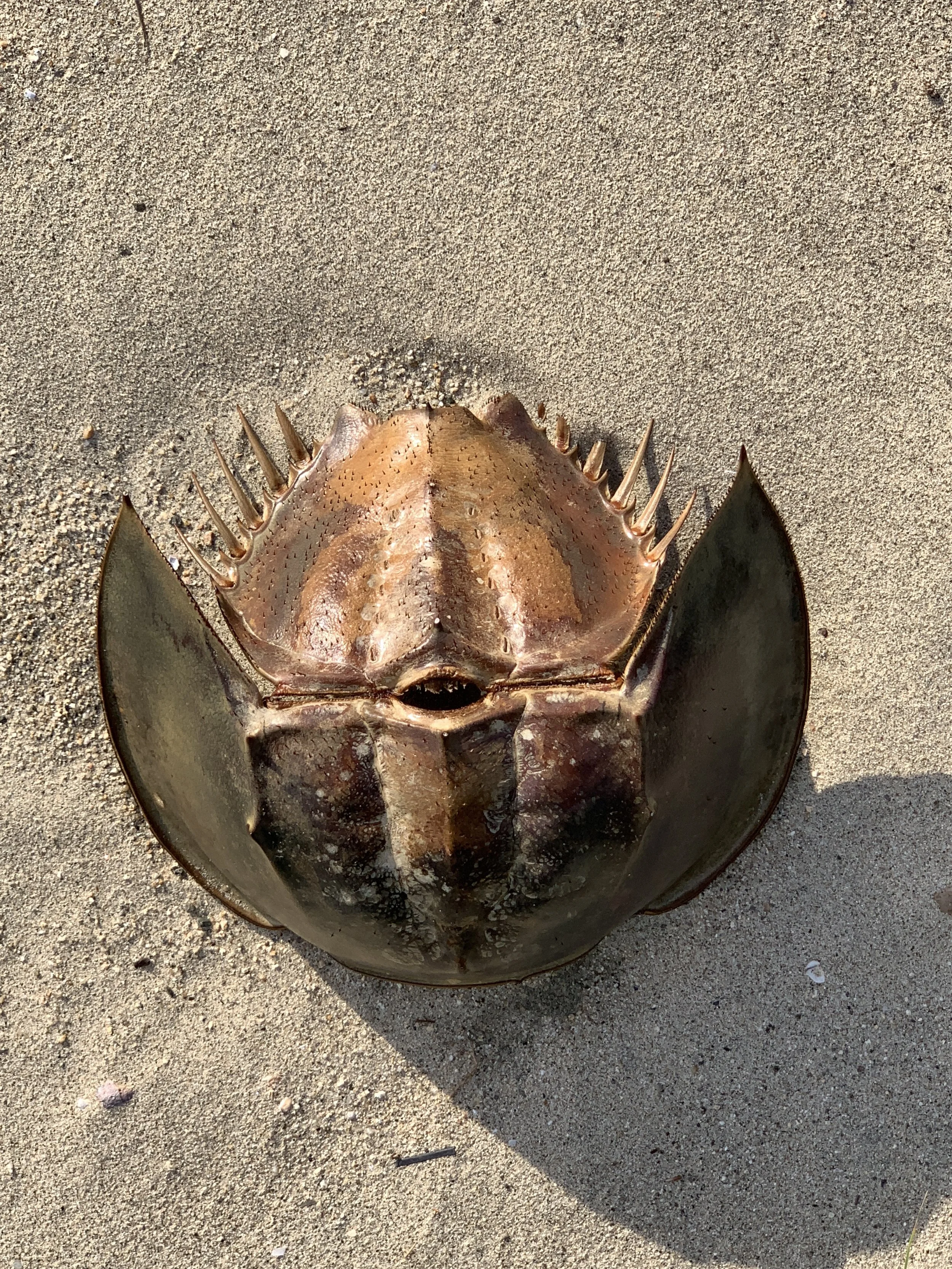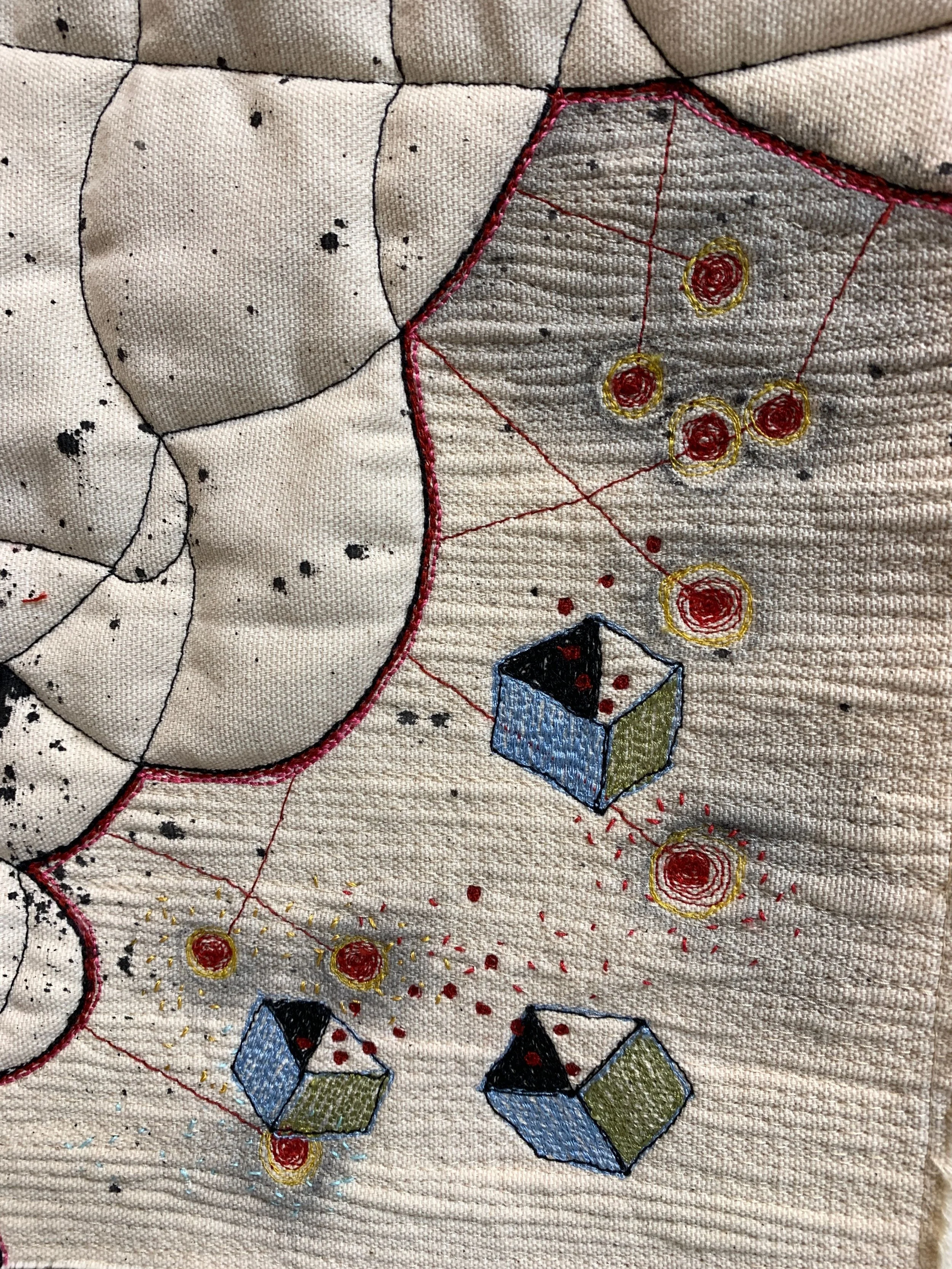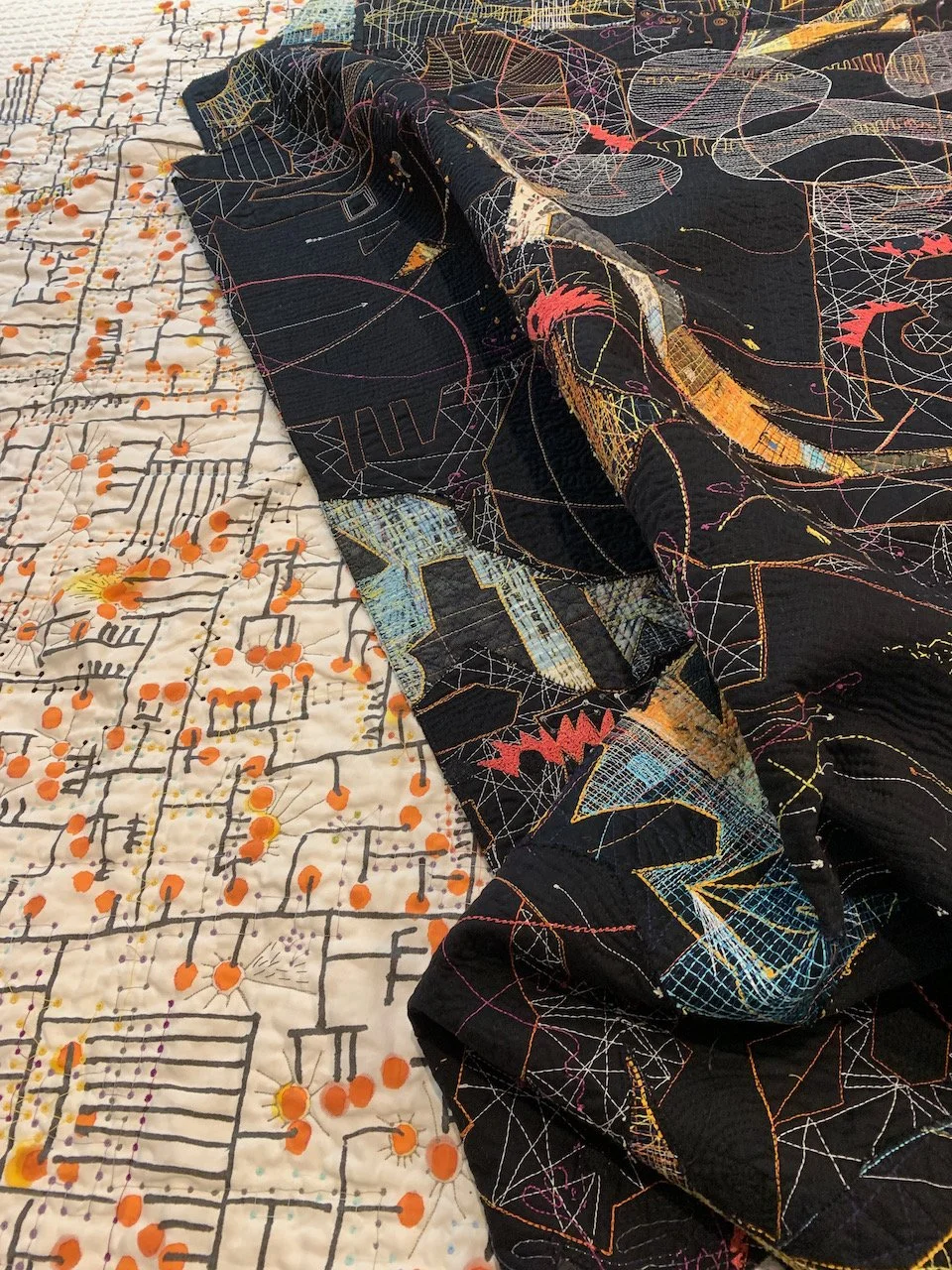The completed tulle and silver thread fence for my refugee project is ready for final attachment to the piece -- which starts a new inner dialog. Is it too pretty? What the &%#! does it mean? And where do I go from here?
For some reason this simple cloth has challenged me at each stage (see other articles here and here). Should I do a map (again)? How does pretty influence meaning? What do other people see in the work? What did I mean by the piece in the first place? And the second place? and the third?
Have I lost the string?
The tulle and silver thread weaving creates the look I was after, a fence that supersedes the space it defines.
I think I am closer with this iteration. But I will still look at it with peripheral vision for a while just to be sure. I know this: It's too pretty. It may need to be three-dimensional. It may need to float in space. There needs to be strife. Meanwhile, some detail shots for your consideration. Tell me what you see?
These olive branches on the edges of the original tablecloth were part of the reason I used the cloth. I haven't yet figured out how they will connect to the primary image.






